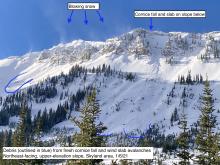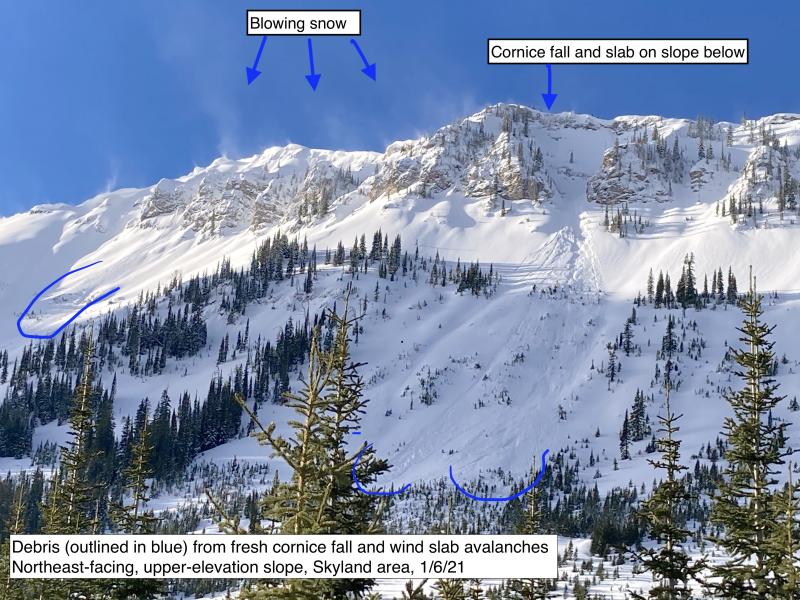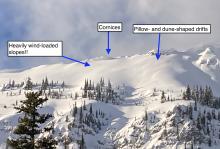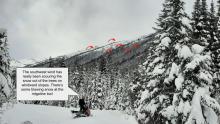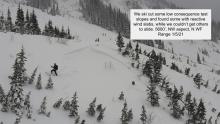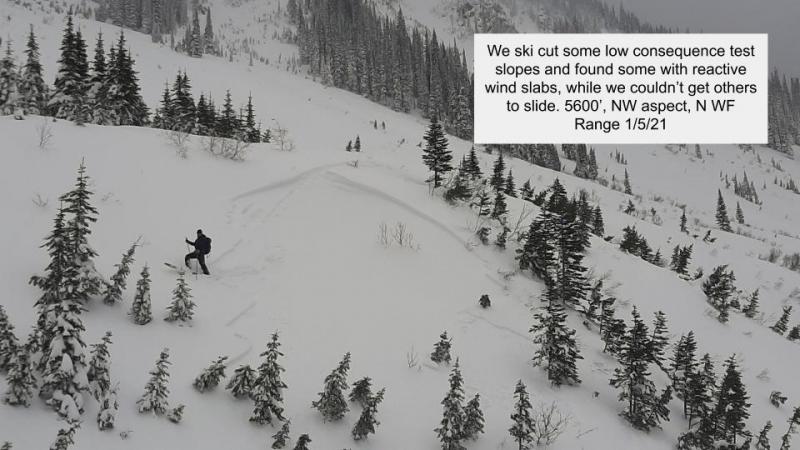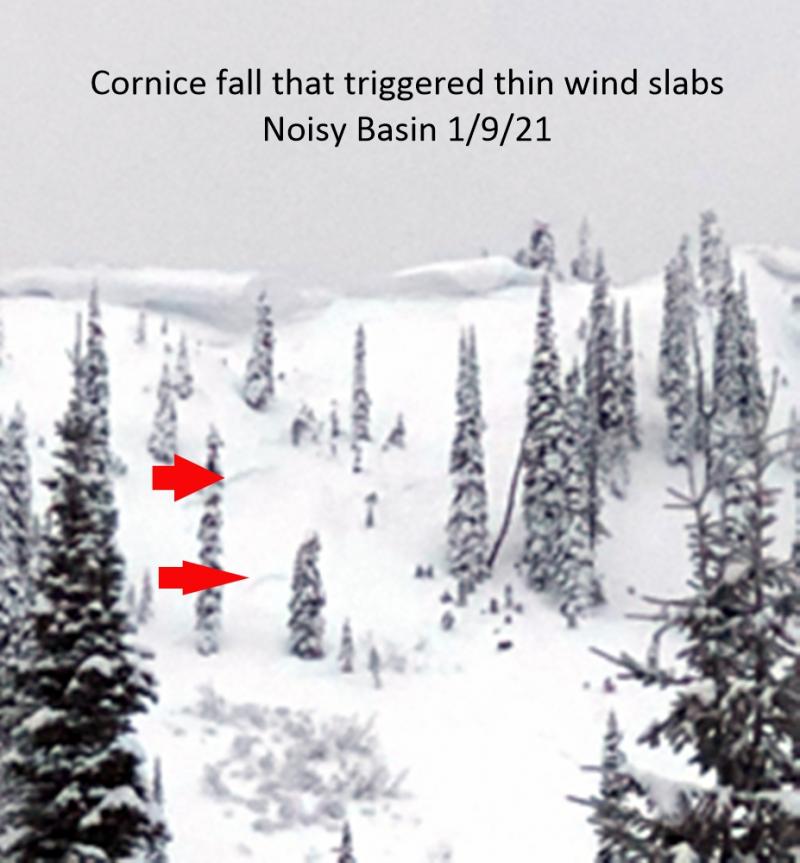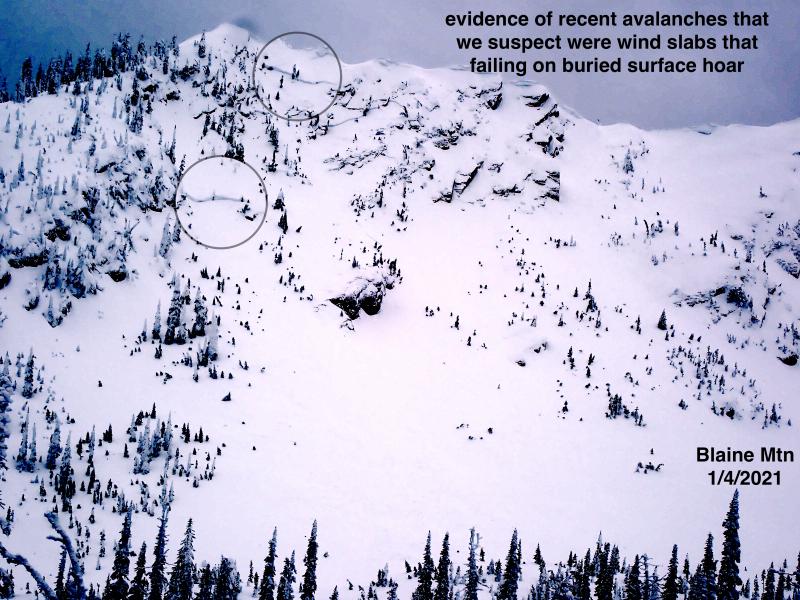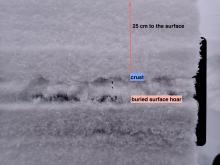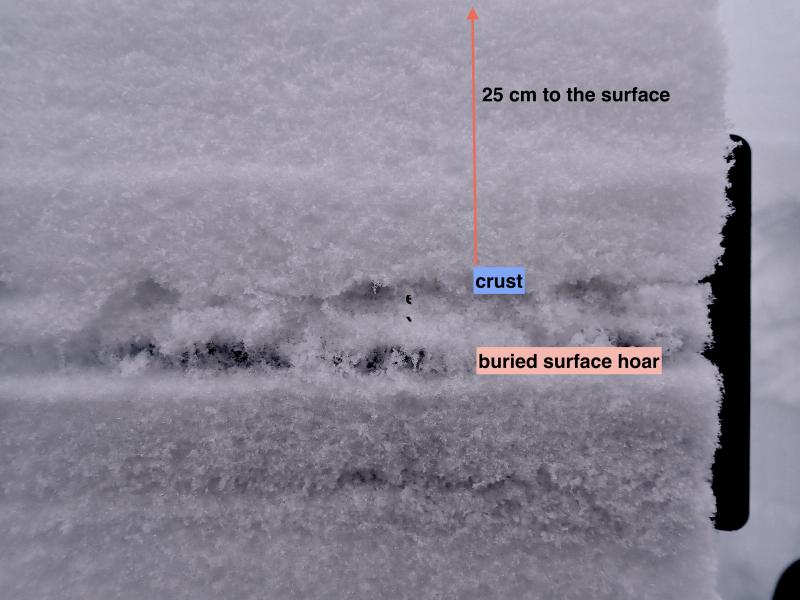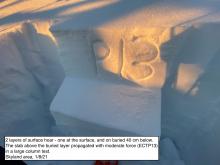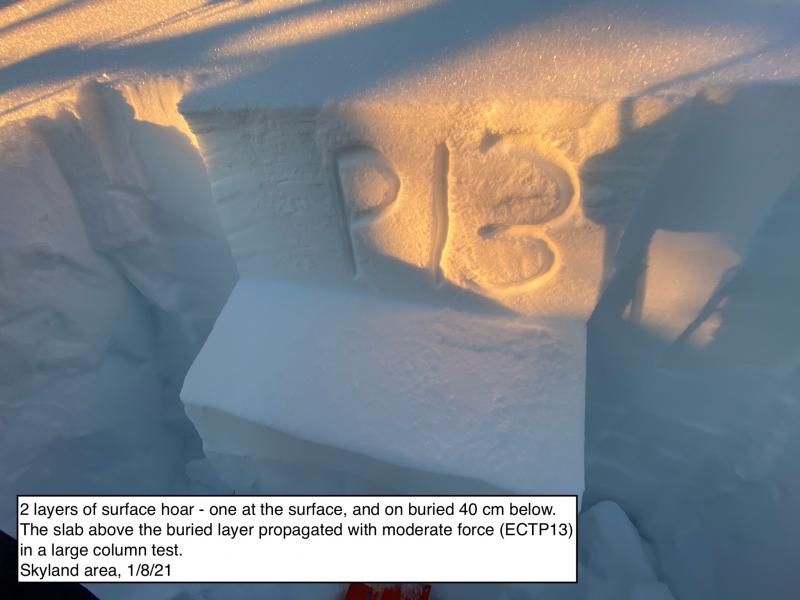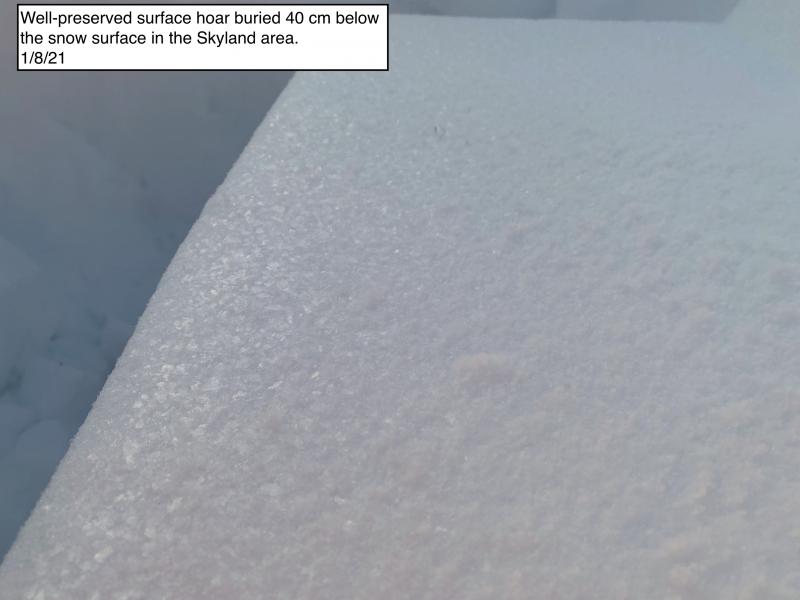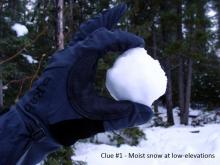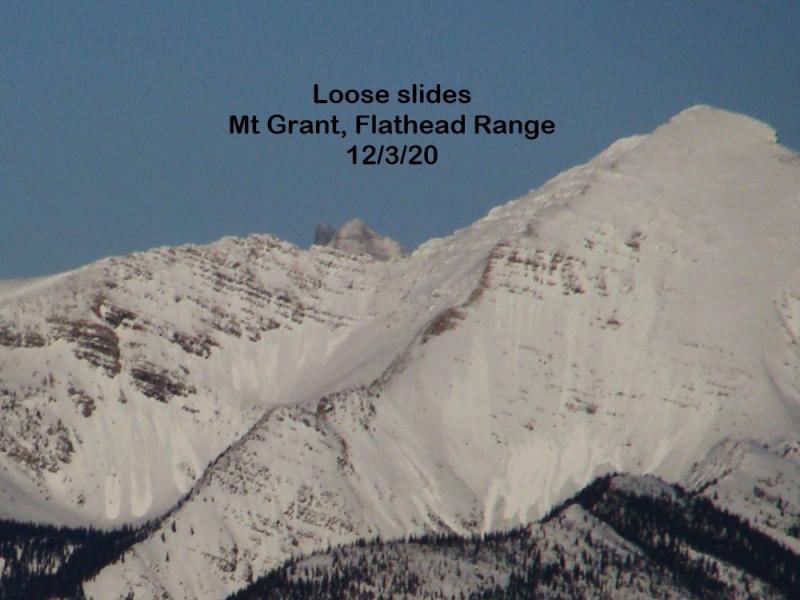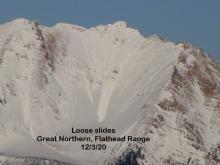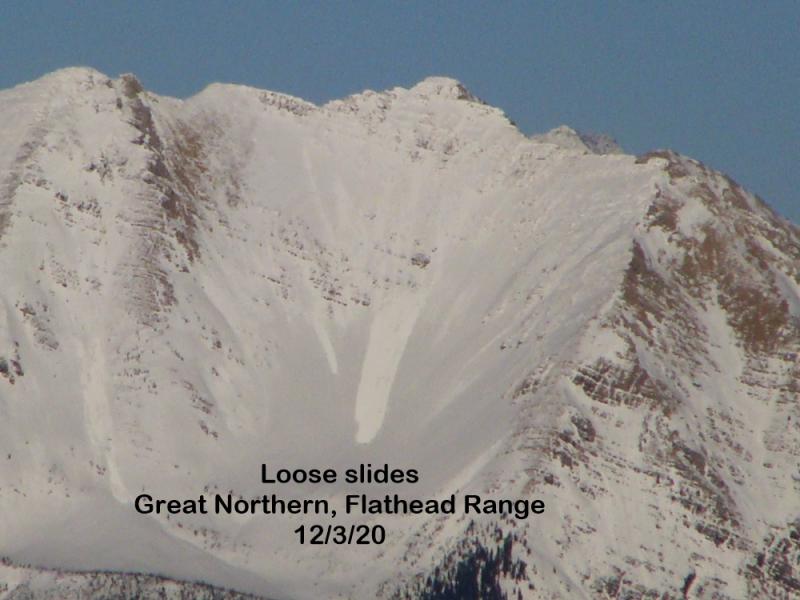| Saturday | Saturday Night | Sunday | |
|---|---|---|---|
| Cloud Cover: | Mostly Cloudy | Mostly Cloudy | Mostly Cloudy |
| Temperatures: | 25 to 32 deg. F. | 21 to 26 deg. F. | 27 to 33 deg. F. |
| Wind Direction: | Southwest | South | Southwest |
| Wind Speed: | 21G39 | 24G47 | 37G69 |
| Snowfall: | 2" to 4" in. | 7" to 9" in. | 4" to 5" in. |
| Snow Line: | 3500' | 3500' | 3000' |
Whitefish Range
Swan Range
Flathead Range and Glacier National Park
How to read the forecast
Avoid freshly-formed slabs of drifted snow which can break 6 to 18 inches deep. You might stumble into these on usually sheltered slopes while seeking relief from powerful winds. Two parties triggered slides that broke on old snow Friday, highlighting a lingering hazard posed by weak snow buried near crusts. With warm temperatures, steep, low elevation slopes may be booby traps for sluffs of wet snow. The avalanche danger will rise as an approaching storm delivers more snow and wind.

2. Moderate
?
Above 6500 ft.
2. Moderate
?
5000-6500 ft.
2. Moderate
?
3500-5000 ft.
- 1. Low
- 2. Moderate
- 3. Considerable
- 4. High
- 5. Extreme
-
Type ?
-
Aspect/Elevation ?

-
Likelihood ?CertainVery LikelyLikelyPossible
 Unlikely
Unlikely -
Size ?HistoricVery LargeLargeSmall

After an uptick in winds overnight, terrain that collects wind-blown snow will harbor slabs 6 to 18 inches thick today. They'll be harder, thicker, and more likely to break above you near ridgelines and at upper-elevations. With winds forecast to remain powerful today and mix below ridgelines, look for freshly-formed slabs at mid-elevations, where they may lurk in unusual places, like mid-slope gullies and gladed slopes well below ridges. Close attention to surface snow conditions will help you spot these slabs. Look for drifts on steep slopes, etched and scalloped surface snow, and new cornices. You or your machine may not sink into the snow in drifted areas. Step back if you encounter small blocks of snow breaking around your skis or machine; these signal a slab.
-
Type ?
-
Aspect/Elevation ?
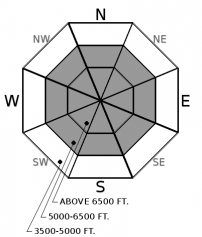
-
Likelihood ?CertainVery LikelyLikelyPossible
 Unlikely
Unlikely -
Size ?HistoricVery LargeLargeSmall

Plan objectives and pick lines that account for the lingering hazard of triggering slabs that break on old snow near the surface or on deeply buried weak layers near crusts. Uppermost in the snowpack - 8 to 18 inches below the surface - is a crust formed during the Solstice storm. Weak snow above this crust may have been the failure layer for one of Friday's accidentally triggered slabs. This layer has produced inconsistent results in snowpack tests the past few days. Deeper in the snowpack - 30 to 40 inches below the surface - are crusts and faceted snow that formed early season. We have no confirmed observations of slides releasing on these structures since the Solstice storm. Rather than gamble, steer around the spots where a person's weight could still affect these weak layers. These potential trigger points are where the slab above the crusts is thinner or weak layers are more developed: slopes where wind scours snow, rocky patches where weak snow forms, and convex rollovers.
-
Type ?
-
Aspect/Elevation ?
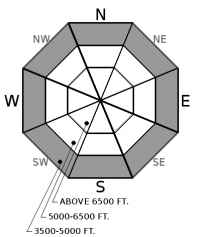
-
Likelihood ?CertainVery LikelyLikelyPossible
 Unlikely
Unlikely -
Size ?HistoricVery LargeLargeSmall

Wet snow on steep slopes can pose a hazard today. You can trigger sluffs of dense debris that's hard to escape, turning small slopes above terrain traps into booby traps. Clear signs of this danger are rollerballs that release naturally or from your board or snowmachine. Avoid gully walls, cutbanks, and steep-sided creek beds.
On Friday, two parties reported triggering slabs that broke a foot deep on steep, northerly slopes near about 6300 feet elevation. Both triggered slides were D2 in size - enough debris to bury or injure a person. While the two incidents occurred in different zones (northern Whitefish Range and Flathead Range), they share some interesting similarities. Both slabs released on convex rollovers well below ridgelines. Neither slope was in typically wind-exposed terrain. The party in the Flathead Range described looking down at "a nice gladed slope with plenty of trees." And both parties reported that the near-surface snow had consolidated markedly from the previous day, either from cross-loading or warming. The slide in the Whitefish Range released on a crust, probably the 12/22 rain crust. Similar surprises are possible today. Safe riding practices can minimize their consequences. Ride one at a time, keep the rider in sight at all times, stop before riding over convexities, and avoid slopes above terrain traps.
Several parties reported a rime crust Friday that developed New Year's Eve. This crust was patchily distributed. The WMR ski patrol reported a thin freezing rain crust that formed Friday. New snow will bury these crusts today and tonight; they may form bed surfaces for sluffs or slabs as snow accumulates.
Mark's video does a great job of summarizing recent developments in the snowpack.
The avalanche danger will rise overnight and into tomorrow as a complex storm slam-dances with local mountain ranges. It's got several elements similar to the Solstice storm - a long plume of moisture, strong winds in the upper atmosphere, and a cold front to end the party. Expect near-surface avalanche hazards - Wind Slabs, Storm Slabs, and Loose Dry avalanches - to develop overnight and potentially dangerous conditions Sunday. The accumulating snow will be load enough to increase the potential for avalanches that release on deeply-buried weak layers near the ground.
A warm and windy day as a complex weather system approaches. Expect powerful winds at upper elevations; these will mix below ridgelines. Snowfall intensifies this afternoon, with significant accumulations and a cold front overnight. It looks like the storm will favor the northern half of our forecast region.
This forecast applies only to backcountry areas outside established ski area boundaries. The forecast describes general avalanche conditions and local variations always occur. This forecast expires at midnight on the posted day unless otherwise noted. The information in this forecast is provided by the USDA Forest Service who is solely responsible for its content.



